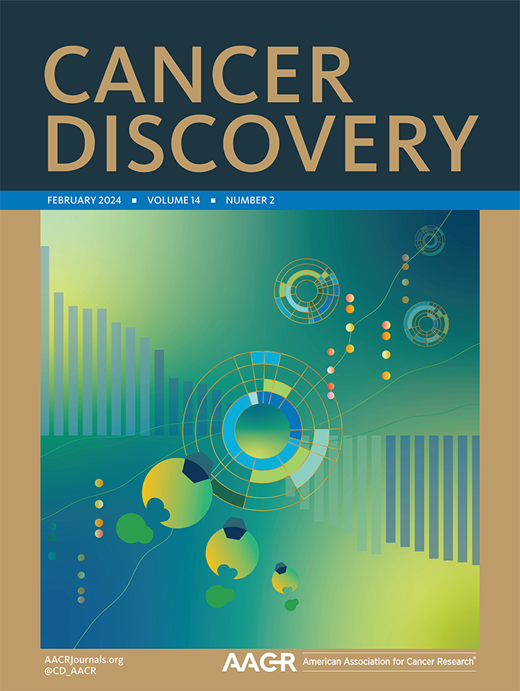The UBA1-STUB1 axis mediates cancer immune escape and resistance to checkpoint blockade
IF 33.3
1区 医学
Q1 ONCOLOGY
引用次数: 0
Abstract
How cancer cells escape immune surveillance and resist immune checkpoint blockade (ICB) remains to be fully elucidated. By screening candidate genes frequently gained in cancer, we identified expression of ubiquitin-like modifier activating enzyme 1 (UBA1) as being the most negatively correlated with signatures related to effector CD8+ T-cells. High UBA1 expression was strongly predictive of treatment resistance and poor survival in ICB cohorts. Functional studies revealed that UBA1 mediated immune escape to promote tumor growth. Immune profiling further showed that Uba1 overexpression or depletion markedly decreased or increased functional intratumoral CD8+ T-cells, respectively. Importantly, a selective UBA1 inhibitor, TAK-243, significantly synergized with ICB in multiple syngeneic models. Mechanistically, depletion or inactivation of the UBA1-STUB1 axis stabilized a key interferon pathway component (JAK1), enhanced IFN-signaling, and elevated key immune modulators, including CXCL9, CXCL10, and MHC class I. Our study warrants clinical evaluation of the combination of UBA1 inhibitors and ICB.UBA1-STUB1 轴介导癌症免疫逃逸和对检查点阻断疗法的抗药性
癌细胞如何逃避免疫监视并抵御免疫检查点阻断(ICB)仍有待全面阐明。通过筛选癌症中经常增殖的候选基因,我们发现泛素样修饰激活酶1(UBA1)的表达与效应CD8+ T细胞相关特征的负相关最大。UBA1 的高表达可强烈预测 ICB 队列中的耐药性和不良生存率。功能研究显示,UBA1介导免疫逃逸,促进肿瘤生长。免疫分析进一步表明,UBA1的过表达或消耗分别显著减少或增加了功能性瘤内CD8+ T细胞。重要的是,选择性 UBA1 抑制剂 TAK-243 与 ICB 在多个合成模型中具有显著的协同作用。从机理上讲,UBA1-STUB1轴的耗竭或失活稳定了干扰素通路的关键成分(JAK1),增强了IFN信号传导,并提高了包括CXCL9、CXCL10和MHC I类在内的关键免疫调节剂的水平。
本文章由计算机程序翻译,如有差异,请以英文原文为准。
求助全文
约1分钟内获得全文
求助全文
来源期刊

Cancer discovery
ONCOLOGY-
CiteScore
22.90
自引率
1.40%
发文量
838
审稿时长
6-12 weeks
期刊介绍:
Cancer Discovery publishes high-impact, peer-reviewed articles detailing significant advances in both research and clinical trials. Serving as a premier cancer information resource, the journal also features Review Articles, Perspectives, Commentaries, News stories, and Research Watch summaries to keep readers abreast of the latest findings in the field. Covering a wide range of topics, from laboratory research to clinical trials and epidemiologic studies, Cancer Discovery spans the entire spectrum of cancer research and medicine.
 求助内容:
求助内容: 应助结果提醒方式:
应助结果提醒方式:


